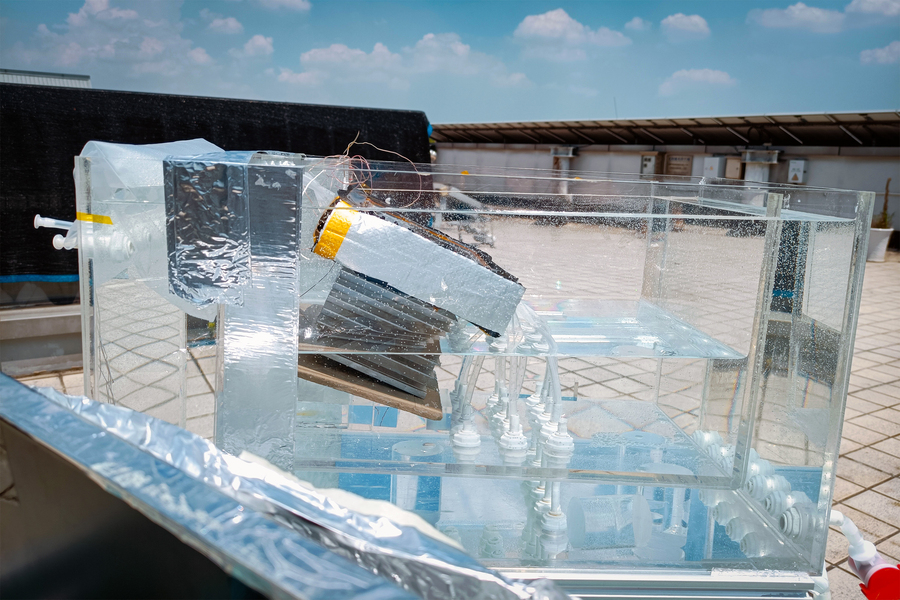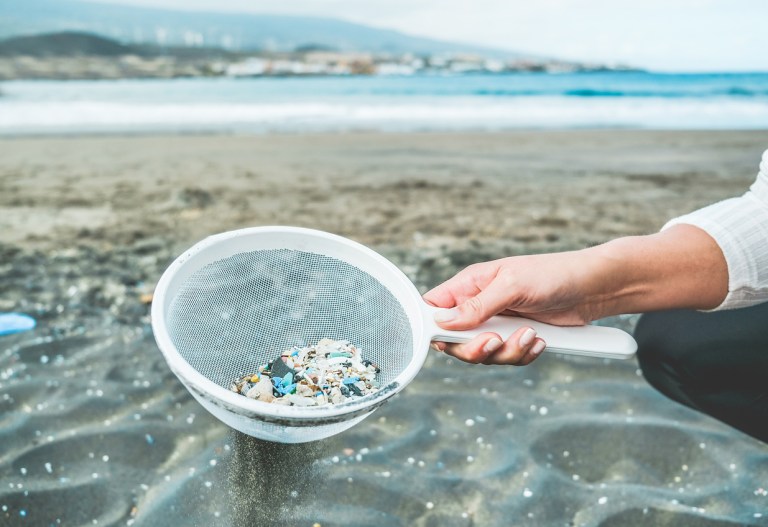Engineers from the Massachusetts Institute of Technology and Shanghai Jiao Tong University in China have developed a revolutionary desalination system inspired by the ocean and powered by the sun — and it could produce drinkable freshwater that is more cost-effective than tap.
In a recent study, the researchers describe a passive device that takes in saltwater and uses natural sunlight to heat it. The unique design enables water to circulate in a way reminiscent of the ocean’s circulation, thus facilitating the evaporation of water and leaving salt behind. The resulting vapor is then “condensed and collected as pure, drinkable water,” while the remaining salt continues to flow to prevent clogging issues, per a press release from MIT.
“When seawater is exposed to air, sunlight drives water to evaporate. Once water leaves the surface, salt remains. And the higher the salt concentration, the denser the liquid, and this heavier water wants to flow downward,” explained co-author Lenan Zhang, a research scientist in MIT’s Device Research Laboratory. “By mimicking this kilometer-wide phenomena in small box, we can take advantage of this feature to reject salt.”
If scaled to the size of a small suitcase, the desalination system could produce 4 to 6 liters of drinking water per hour and remain operational for several years before requiring replacement parts. The system’s affordability — it doesn’t require any electricity — and adaptability also make it suitable for off-grid and low-income coastal communities experiencing water scarcity.
“We show that this device is capable of achieving a long lifetime. That means that, for the first time, it is possible for drinking water produced by sunlight to be cheaper than tap water,” said co-author Yang Zhong. “This opens up the possibility for solar desalination to address real-world problems.”
For now, though, Zhong and his colleagues plan to continue testing the device in a lab setting, the scientist told Insider. They need to learn how durable the device is and just how much brine — extremely salty water that is a byproduct of the desalination process — it creates.
When released back into the ocean, brine can be harmful to some marine ecosystems, but according to Manzoor Qadir, an environmental scientist who was not involved in the MIT study, there are ways to mitigate that issue.
RELATED: These Hydropanels Use the Sun to Make Clean Drinking Water
“The trade-off is that desalination produces brine, but it’s not actually a big deal because now there are more and more technologies emerging to minimize brine production,” Qadir explained to the outlet. “They’re also trying to find fish species that can tolerate very high levels of salts. So it’s not actually an issue, but still there is a need to keep investigating.”
Zhong also shared that his team will continue working on scaling up the size of the device, noting that they’ve already received inquiries from domestic and international groups.
To Qadir, who serves as deputy director for the United Nations University, creating systems like this one is crucial. This past March, the UN warned of an impending water scarcity crisis in its 2023 World Water Development Report.
“Desalination is the future of water resource augmentation,” he said.
Share to:












